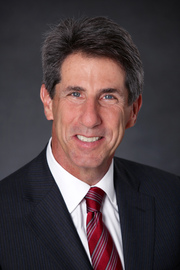BLOG
 An article authored by shareholder Stuart Sobel was featured as the “Board of Contributors” guest commentary column in today’s edition of the Daily Business Review, South Florida’s exclusive business daily and official court newspaper. The article, which is titled “‘Daubert’ Standard in Fla. Construction Litigation Requires Deft Implementation,” focuses on the ramifications of a decision earlier this year by the Florida Supreme Court to reinstate the Daubert standard for evaluating and admitting expert testimony, after having abandoned it in favor of the Frye standard. Stuart’s article reads:
An article authored by shareholder Stuart Sobel was featured as the “Board of Contributors” guest commentary column in today’s edition of the Daily Business Review, South Florida’s exclusive business daily and official court newspaper. The article, which is titled “‘Daubert’ Standard in Fla. Construction Litigation Requires Deft Implementation,” focuses on the ramifications of a decision earlier this year by the Florida Supreme Court to reinstate the Daubert standard for evaluating and admitting expert testimony, after having abandoned it in favor of the Frye standard. Stuart’s article reads:
. . . The more stringent Daubert standard, which is used in federal courts and most state courts, requires that the court act as the gatekeeper, determining that proposed expert testimony is based upon scientific methods appropriately applied to the matter at hand, presented by appropriately qualified witnesses. The resurrection of the Daubert standard in Florida has the potential to increase the cost and time needed for litigating construction disputes, since Daubert challenges will now become the norm, rather than the exception.
Trial courts will employ a multi-factor test to determine whether experts’ methods are “scientifically reliable.” They will hold pretrial hearings on Daubert motions to determine whether experts will be limited in the scope of their testimony or excluded from testifying at trial.
‘Daubert’ vs. ‘Frye’
Daubert represents a higher bar for allowing expert witness testimony than Frye, which allows experts to testify based on whether their methods and opinions are considered generally acceptable by the community of similarly situated professionals.The Daubert standard had been in effect in Florida from 2013 to 2018, when opponents successfully convinced the Florida Supreme Court that the standard made trials more expensive and hindered access to the courts. In October 2018, the state’s highest court concluded that the 2013 legislative imposition of the Daubert standard improperly impinged upon the court’s rule-making authority and rejected it. That rejection left Frye as the standard governing Florida state courts.
In the 5-2 opinion issued May 23, without an actual case or controversy raising the question, the current court found that the “grave constitutional concerns” raised by those who opposed Daubert “appear unfounded.” It concluded the Daubert standard remedies deficiencies of the Frye standard.
The use of the Daubert standard brings with it the potential for evidentiary hearings on motions challenging the experts and their testimony. In multi-party cases involving numerous defendants and their insurers, plaintiffs could face Daubert motions from multiple defendants challenging each of their experts.
In this practitioner’s experience, however, careful selection of experts and appropriate limits on analysis and conclusions render successful Daubert challenges rare. Those challenges, when unsuccessful, reveal a challenger’s likely cross-examination strategy and certainly drive up the cost of the litigation.
Ill-Suited Test
Moreover, even under Daubert, a proposed expert’s pertinent experience with the testing, analysis and conclusions involved in a case should always be sufficient to overcome a Daubert challenge. That is driven by the nature of the subject matter of expert testimony involved in construction disputes.
Construction techniques and processes are not readily susceptible to scientific testing, peer review or even a widely accepted body of literature. While there certainly are exceptions, it is often difficult to fit the type of expert called upon to explain the construction process at issue into a neat Daubert-type test.
The theories underlying the testimony of construction experts are typically tested in the field in other construction projects rather than in a controlled experiment under laboratory conditions. Many theories pertinent to construction expertise have been published. However, except for esoteric discussions over the benefits of qualitative vs. quantitative testing, highly technical fracture-critical analyses, calculations of loads or other precise engineering concepts, there generally are no specific and pertinent peer-reviewed studies for the courts to consider. Standards exist in certain segments of the industry (American Institute of Steel Construction, American Concrete Institute, OSHA, etc.), but there are no authoritative studies for construction means and methods, sequencing or submittal administration.
Construction law practitioners are left to struggle to fit a square peg, a reliable expert with significant experience, into the round hole of a strict Daubert analysis. This is accomplished by relying on experts whose methodologies are based on sound and accepted construction practices, which would certainly include the investigation, testing, evaluation and analysis of the appropriate samples. The best experts for specific cases will be those who have applied specific solutions to the technical issues underlying the disputes, and their experience should always outweigh any lacks in written scientific and statistical studies.
Most experienced construction litigators already understand that the slippery slope to higher litigation costs associated with frivolous Daubert motions should be avoided in defect litigation. Such challenges will likely serve to tip off opposing counsel to one’s eventual lines of attack against the testimony of experts rather than to prevent the witnesses from testifying. These motions should only be used when serious questions as to the validity of an expert and their testimony are in play. . .

